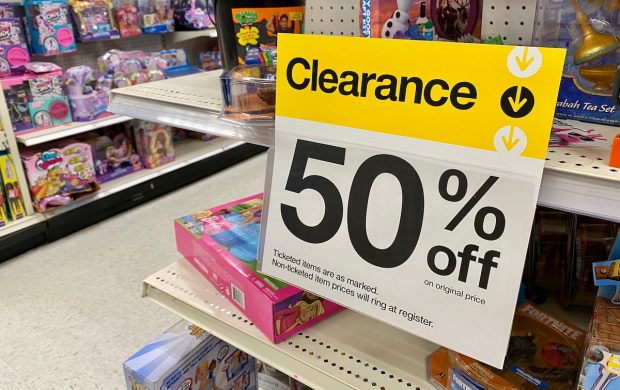Target, Nike, Urban Outfitters Get Jump on January Clearance Sales

With inventories high, retailers aren’t waiting until January to launch clearance sales.
Among these companies is Target, whose new “Target Clearance Run” gives shoppers discounts of up to 50% on a number of categories, plus numerous “buy one, get one” offerings.
“Our guests always look forward to post-holiday deals, whether they’re looking to spend the gift cards they received as a holiday gift, restock their pantries after hosting for the holidays or prepare for a New Year’s celebration,” Christina Hennington, the retailer’s chief growth officer, said in a news release.
This year has seen Target struggle to deal with high inventory levels, but the company is far from alone on that score.
Inventory bloat led both Target and Walmart to launch their holiday sales earlier than normal.
Last month, Walmart’s executive team said that its efforts to reduce inventory had gotten to the point where it expected not to have to discuss the issue. The company’s third-quarter inventory was up just 13% versus the year before, a move representing a 10-percentage-point improvement from the previous quarter.
Meanwhile, a report Wednesday (Dec. 28) by Seeking Alpha noted that a number of apparel companies are marking down their merchandise to reduce inventories, including Adidas, Foot Locker, Urban Outfitters and Nike. Nike is extending its sale into 2023, with other retailers — Amazon, Levi Strauss and Nordstrom among them — continuing promotional efforts into the new year.
Earlier this month, Nike said it was “investing in markdowns” and using those promos to entice new members and fuel its overall sales and burgeoning Consumer Direct efforts.
In October, the footwear seller reported that its North American inventories had risen 65%, leading company officials to promise “decisive action.”
Retailers’ ongoing markdowns are happening as consumers are cutting back on their spending. The latest edition of Mastercard’s Spending Pulse found that spending on popular holiday items like jewelry and electronics fell more than 5% between Nov. 1 and Christmas Eve.
The report also showed that online sales rose 10.6% versus last year, with eCommerce making up 21.6% of total sales this year, compared to 20.9% in 2021 and 20.6% in 2020 as shoppers put greater weight on convenience and discounts and turned to online shopping to find it.
“Inflation altered the way U.S. consumers approached their holiday shopping — from hunting for the best deals to making trade-offs that stretched gift-giving budgets,” said Michelle Meyer, North America chief economist, Mastercard Economics Institute.
For all PYMNTS retail coverage, subscribe to the daily Retail Newsletter.